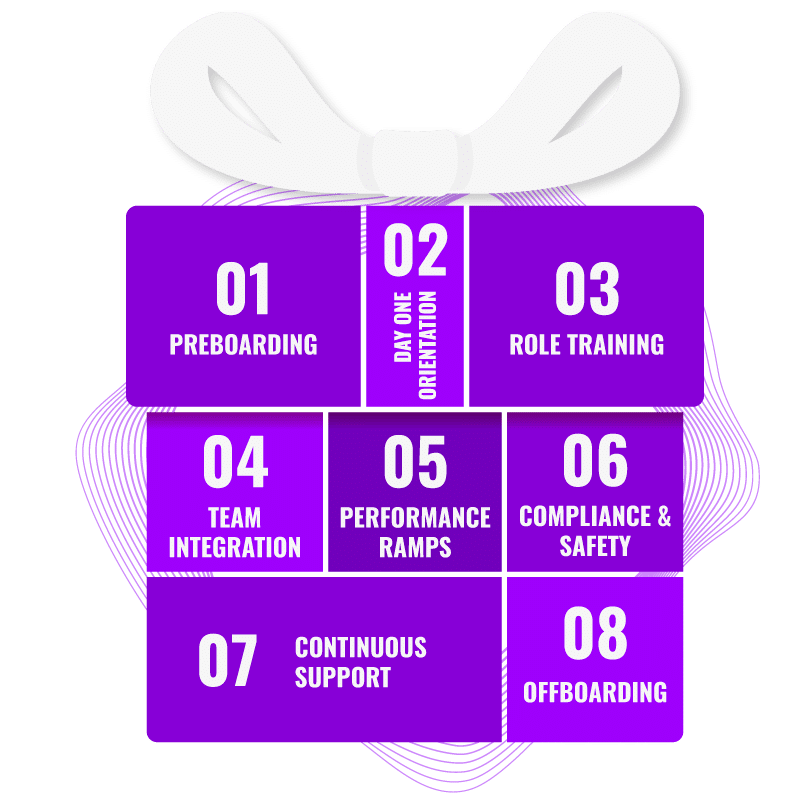Onboarding Seasonal Employees: How to Deliver Day-One Productivity Without Burnout or Bottlenecks
Onboarding can be an overwhelming experience for any new hire. There are new processes, tools, and products to learn. New relationships to build. Layer in the chaos of the holiday rush and you’ve got a recipe for potential compliance risks, burnout, and early turnover.
A recent Paychex survey found that 50% of newly hired employees plan to quit soon. That number jumps to 80% among those who feel undertrained from poor onboarding. These numbers don’t even account for the fast-paced, short-term nature of seasonal work.
Effective onboarding for seasonal employees requires a delicate balance of speed and precision. You’re working on compressed timelines, but you can’t skip a step without sacrificing quality—or worse, losing new hires before they’ve even hit their stride.
In this blog, you’ll learn how to modernize HR journeys and simplify seasonal staff management with AI and automation. The right tools—like Rival Workflow and Rival Learn—can help you reduce bottlenecks and deliver day-one productivity.
TL;DR
When onboarding can’t keep up with seasonal hiring, you risk early turnover. Nearly 80% of employees who feel undertrained plan to quit. Turn this around by automating forms, provisioning, and training with Rival Workflow and Rival Learn. The result is less stress for HR and seasonal employees who are ramped and ready to roll on day one.
Why Seasonal Employee Onboarding Requires a Different Approach
Seasonal onboarding is an entirely different beast from onboarding at any other time of year. We’re talking about getting dozens, sometimes hundreds, of employees trained up in a matter of days. And those new hires are often stepping into fast-paced environments like retail floors, warehouses, hotels, and production lines where every hour of productivity counts.
What’s more, they face the same compliance requirements, safety protocols, and customer expectations as any other employee.
Here are the high-level roadblocks you’re likely to run into:
- High volume, low runway: Managers have limited time to train and certify seasonal hires before peak demand.
- Inconsistent experiences: When you’re hiring in multiple locations or for multiple shifts, onboarding quality can vary significantly.
- Manual overload: HR and operations teams spend hours stuck in manual data entry and coordination. According to TechClass, one fast-growing firm found it was spending 10 hours of staff time across three departments just to onboard one employee.
- Low engagement: They might be busy, but because their role is temporary, seasonal hires don’t feel as connected to the company culture.
Seasonal employees don’t have a long runway with your organization. If onboarding is disorganized or rushed, that’s often reason enough to walk away.
Employers who’ve cracked the code on seasonal work understand that a repeatable, automated onboarding process is the only way to go. By connecting your onboarding program to your ERP or HRIS, you can sync employee data, automate provisioning, and launch consistent training journeys the moment a hire is made.
The Essential Stages of Onboarding Seasonal Employees
A strong, repeatable onboarding for seasonal employees starts with the basics. Review the essential stages below and determine where the gaps are in your process and/or the opportunities to introduce automation and learning tools to help you scale.
Step One: Preboarding
Onboarding should actually start the moment a new hire signs the offer letter. From there, get a head start and send welcome emails, digital paperwork, and training links. Rival Workflow can help you automatically trigger these tasks from your HRIS or ERP, so your new hires show up on day one ready to work, not stuck in the breakroom filling out forms.

Step Two: Day One Orientation
The rush is real, but resist the temptation to just throw new hires straight into the deep end. Schedule a short orientation that’s quick and accessible. Layer in short informational videos or safety briefings that can be viewed during their first shift. Rival Learn can help you deliver a consistent day one experience that balances a warm welcome with compliance requirements.
Step Three: Role Training
Seasonal employees need to be fully ramped in a matter of days. Rival Learn can help you deliver just-in-time learning to get them there faster, such as short videos on stocking procedures, order scanning, or guest interactions. Then track all the various aspects of training without the spreadsheet scramble. Create guided journeys by role, region, or team, and access high-level dashboards and drill-downs by site.
Step Four: Team Integration
The human side of work still matters for seasonal employees. Help them feel part of the team by pairing new hires with buddies or shift leaders. Rival Workflow can automatically schedule first-day and first-week check-ins so managers can stay focused on people, not paperwork.
Step Five: Performance Ramps
With shorter timelines, real-time performance insights matter. Rival Learn allows you to see who’s thriving and who might need extra support, and Rival Workflow can automatically trigger reminders for managers to record early milestones.
Step Six: Compliance and Safety Reinforcement
For industries like logistics and manufacturing, compliance is a continuous process you can’t afford to get wrong. Automate recurring safety refreshers through Workflow and use Learn to deliver quick micro-courses that reinforce key policies. That will keep you audit-ready all season long.
Step Seven: Continuous Support
At the two-week mark, send automated surveys or schedule check-ins to capture feedback. Does anyone need more support? Are there recurring issues that need to be addressed with a new process? Surface those challenges and proactively address them before you have a turnover issue.
Step Eight: Offboarding & Rehire Readiness
Set your team up for success next season with a smooth offboarding process. Rival Workflow can handle access removal, equipment returns, and exit surveys automatically. Flag standout performers to strengthen your talent pool for the next hiring surge.
By putting structure around onboarding for seasonal employees, you can get them engaged early and ramped faster.
How ERP Integrated Onboarding Simplifies Seasonal Staff Management
One of the main reasons seasonal onboarding feels chaotic is because your systems aren’t talking to each other. HR is tracking forms in one platform. Managers are using a different platform for training. IT might be manually provisioning accounts. That’s a lot of handoffs without an overarching view of all onboarding activities.
While enterprise resource planning (ERP) software like SAP or Oracle claims to solve this issue, using an ERP alone doesn’t provide a great employee experience, especially as you scale hiring and add in compliance complexity.
The solution is an ERP-integrated onboarding system. Integrate Rival with your ERP to create a connected ecosystem for all the tools and employee onboarding checklists you need to get employees ramped. Each new hire automatically triggers a journey of tasks, approvals, and learning.
Here’s what that looks like:
- Centralized data: When a new seasonal hire is added to your ERP or HRIS, Rival Workflow instantly kicks off their onboarding journey and routes tasks to HR, IT, and managers.
- Automated provisioning and compliance: Workflow assigns forms, approvals, and safety checklists the moment your new hire is added to the system.
- Connected training: Rival Learn is integrated with your ERP to automatically deliver role-based training and document its completion. For example, warehouse employees get forklift safety videos, and store associates get POS tutorials.
- Real-time tracking and reporting: One dashboard can show you where every new hire is in the process and potential bottlenecks.
With the sheer volume of seasonal new hires, you can’t afford to be bogged down in manual tasks and systems. ERP-integrated onboarding grounds your process in efficiency so you can scale.
Turn Peak-Season Hiring Into a Repeatable Advantage
Are you ready to transform seasonal onboarding from a chaotic scramble into a structured, efficient process—one you can activate with a single click?
With Rival Workflow and Rival Learn, you can reduce manual work and give every new hire the clarity they need to succeed from day one. When you spend less time chasing people and logging into multiple systems, you can focus your energy on creating a culture that thrives even under seasonal pressures.
Make seasonal onboarding your competitive advantage.
See how Rival can help you onboard smarter, faster, and at scale.
Onboarding Seasonal Employees FAQs
What legal requirements should U.S. employers know for seasonal hires?
Seasonal employees are typically subject to the same wage, hour, and safety regulations as full-time staff, including FLSA rules such as overtime, breaks, and youth employment protections. For regulated industries like manufacturing or logistics, be sure to read up on OSHA and state-specific safety training requirements. Use a tool like Rival Workflow to ensure every policy acknowledgement, digital signature, and training completion is documented and audit-ready.
How can onboarding be accelerated without sacrificing training quality?
The key is to frontload admin tasks and microlearning before day one—things like forms, background checks, and provisioning. Rival Learn makes it easy to assign short, role-specific courses new hires can complete on their own time. This way on day one, your new hires are ready to dive deep into safety and training.
How do employers keep seasonal hires engaged so they stay through the season?
Simple things like a buddy system, first-week check-ins, and recognition go a long way in making your seasonal hires feel like they are an integral part of the team. (Don’t forget these nudges can be automated with Rival Workflow, and Rival Learn can deliver pulse surveys to capture sentiment trends.)
What’s the ROI of improving seasonal employee onboarding?
Effective seasonal onboarding reduces direct and indirect costs. For example, say your company hires 500 seasonal employees and typically loses 40% in the first 30 days, or 200 new hires. A conservative estimate for an hourly role is $4,000 per turnover, meaning you have $800,000 in preventable loss. If you could reduce early attrition by just 15%, that would lead to $300k in savings in one season. This doesn’t even account for the productivity gains, time saved, and compliance risk reduction that comes with better onboarding.


















